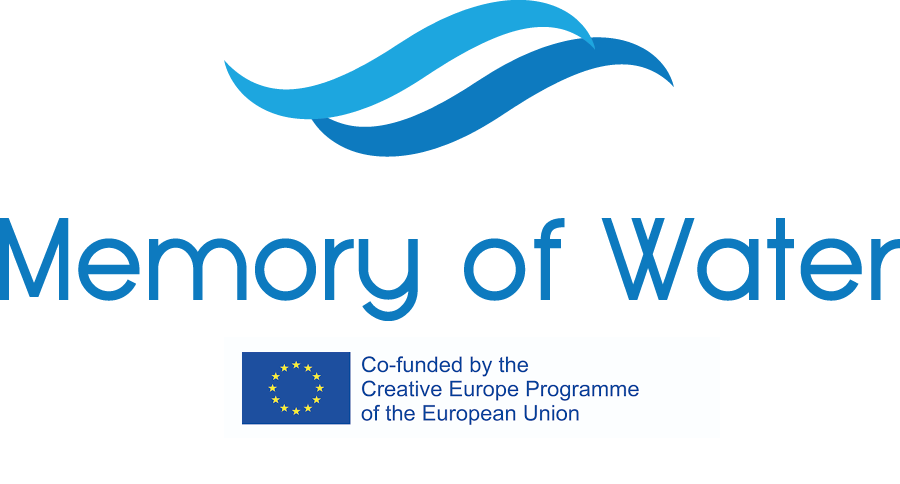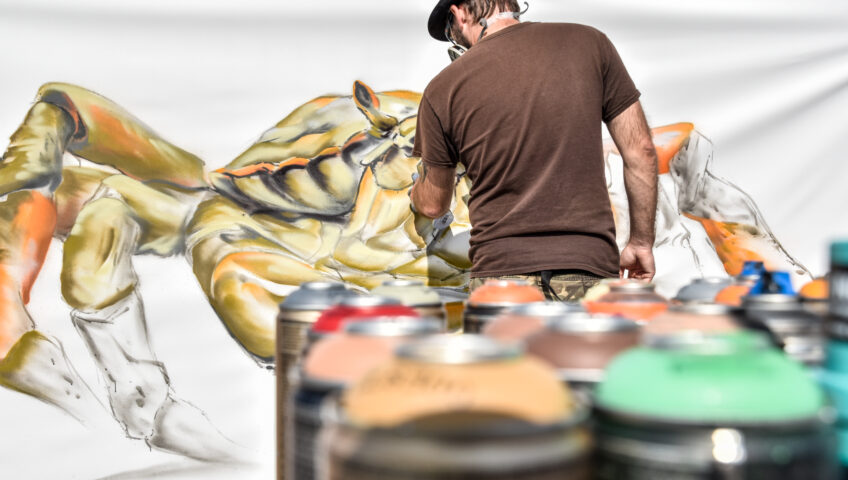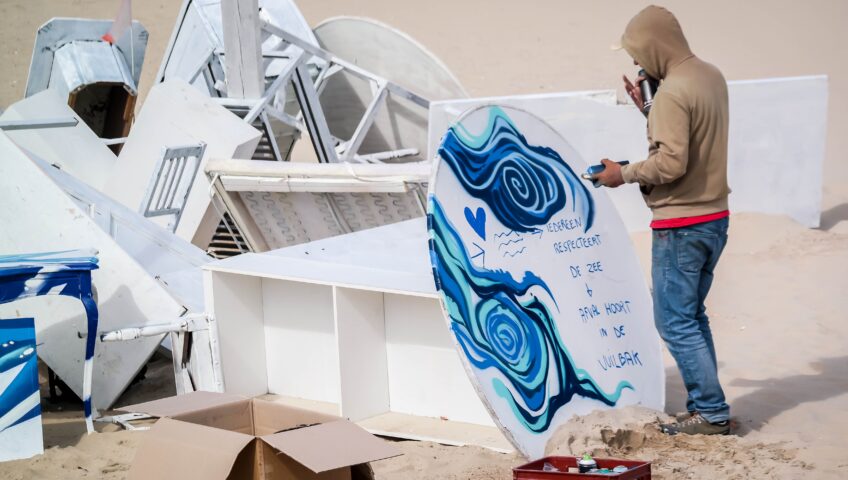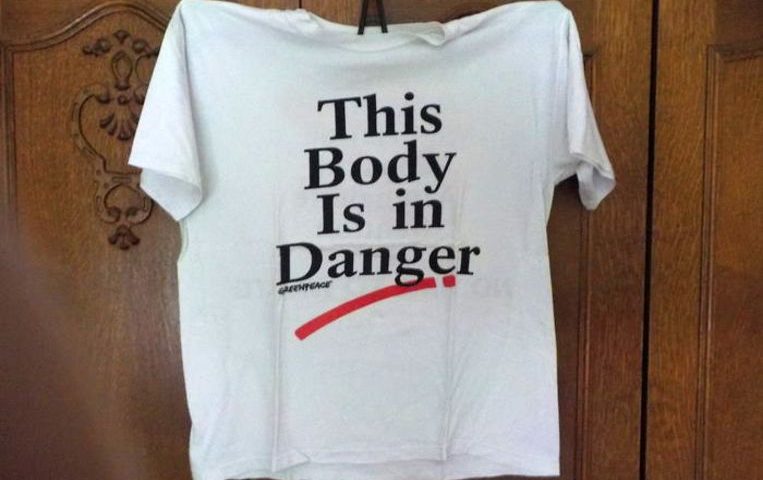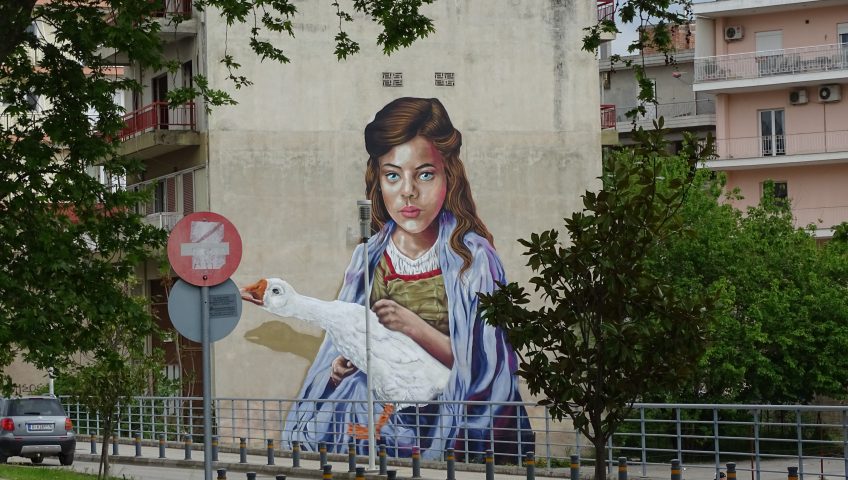
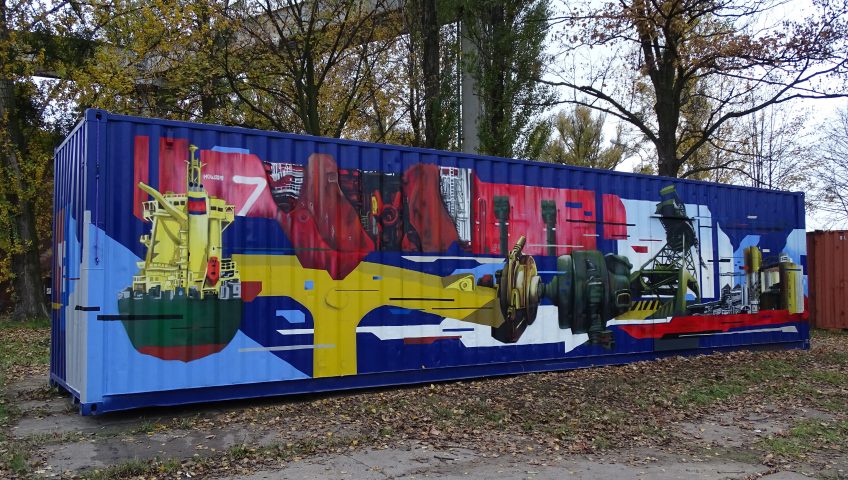
Reflection: Industrial Impressions
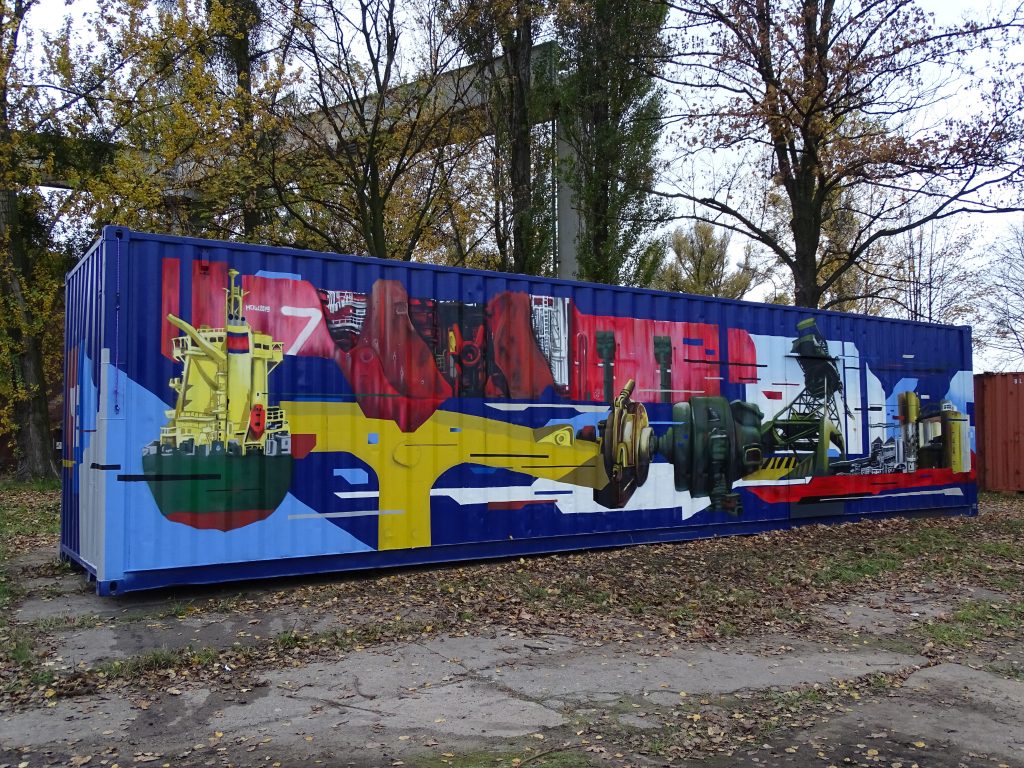
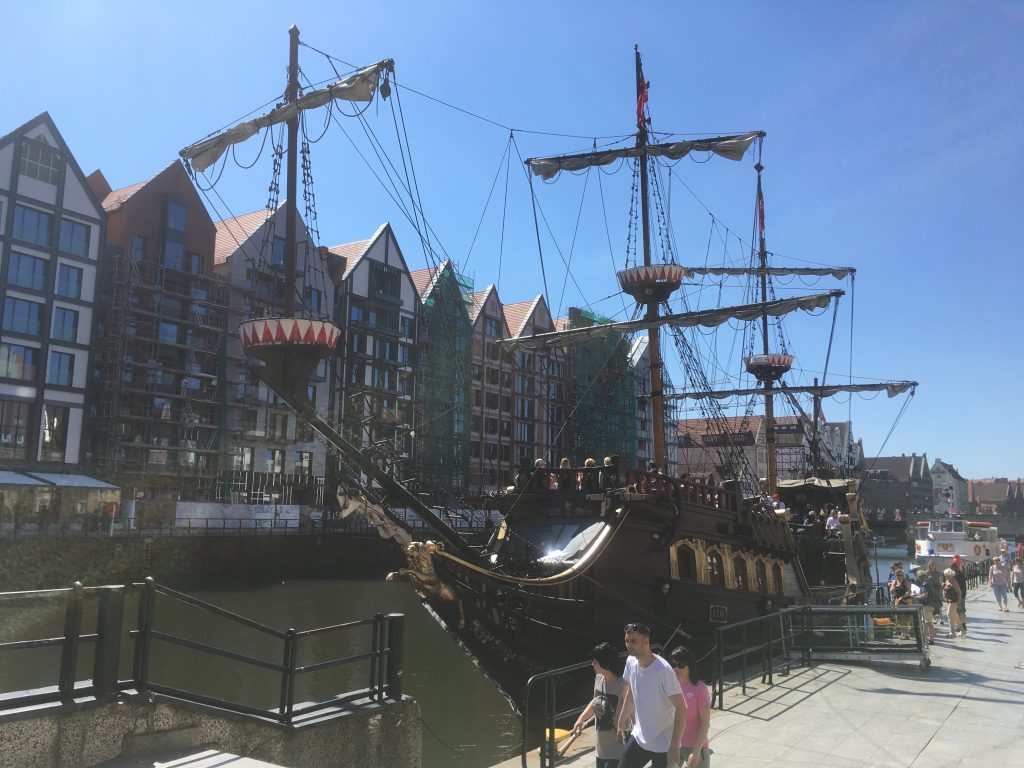
During our research residency in Gdańsk (June 2019), we decided to hop on this pirate ship to explore the shipyard from the water. This simple tourist attraction would turn out to be one the most inspiring moments ever for me. Besides the hundreds of pictures I took during the sailing along the waterfront, I was blown away, not only by the industrial aesthetic, but especially by the randomness of all the colours there. As an artist, that was so interesting for me, I immediately knew these wild colour combinations would play a dominant role in my planned artistic intervention.
Back home I made designs by mixing up fragments of my colourful documentation. Industrial Impressions began to form. The design was ready but finding a wall to paint it on was the biggest challenge. One wall was cancelled because of imminent demolition. Other walls were too vulnerable to vandalism. Just two weeks before the production residency, the Polish team proposed a shipping container as a canvas for the artwork. There are easier surfaces to paint on! The ribbed structure is far from ideal, especially for the linework. But the shipping container was a fantastic deep blue water colour and since shipping containers are so prominent in the shipyard, turning one into a piece of arts was the last piece to fit the puzzle.
Siegfried Vynck
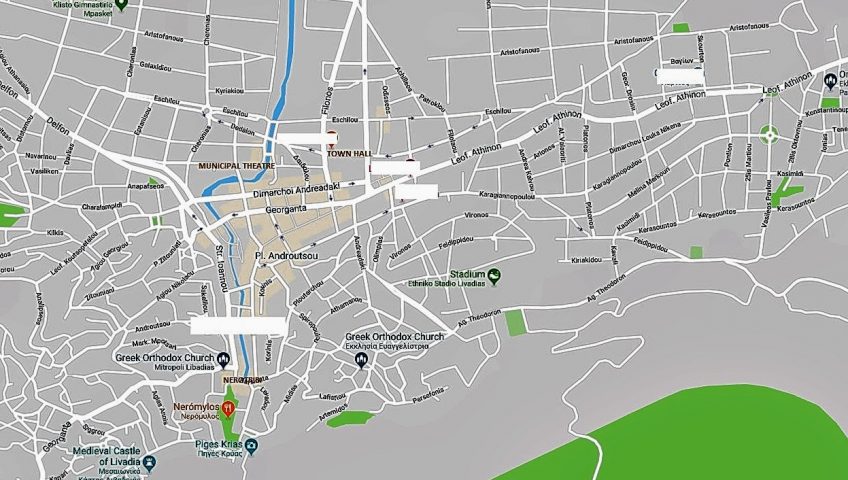
Reflection: The Perfect Wall
After lunch break, we hooked up with the local graffiti crew at Levadia. Always exciting meeting artists with the same passion, spray paint that is. And amazing how we connected straight away; I guess that when graffiti runs through your veins, it’s like a universal language when you meet other “writers” (graffiti artists). With the sun at its highest point we left for our city stroll. For me especially, the hunt for a canvas/wall was on. And there are plenty of great walls in Levadia! The potential for Street Art productions in this compact city is incredible. Lots of huge “blind” walls and all in perfect smooth concrete… “WALLhalla”!
Unfortunately tagging seems popular among Levadian kids. It’s almost everywhere. Sure I’ve got nothing against a well designed, aesthetic tag but mostly this wasn’t the case. Our group discussed this issue while we continued our exploration. “One way to counter illegal tagging is to provide a legal graffiti wall or space,” I suggested. A place where graffiti painters can practise their skills without the fear of being caught, this can result in higher level of artistry and mostly results in outgrowing the phase of simple tagging. It’s a “fight-fire-with-fire” concept, so to speak. Of course the locals were all in favour. Legal graffiti walls are mostly combined or near a local skatepark. Since the two sub-cultures are intertwined. We crossed the street… and there it was… a huge wall, in plain sight, near the riverbank, just outside the old city centre. This concrete surface was just screaming to be painted… I knew I had found… the perfect wall!
– Siegfried Vynck (Belgium)
